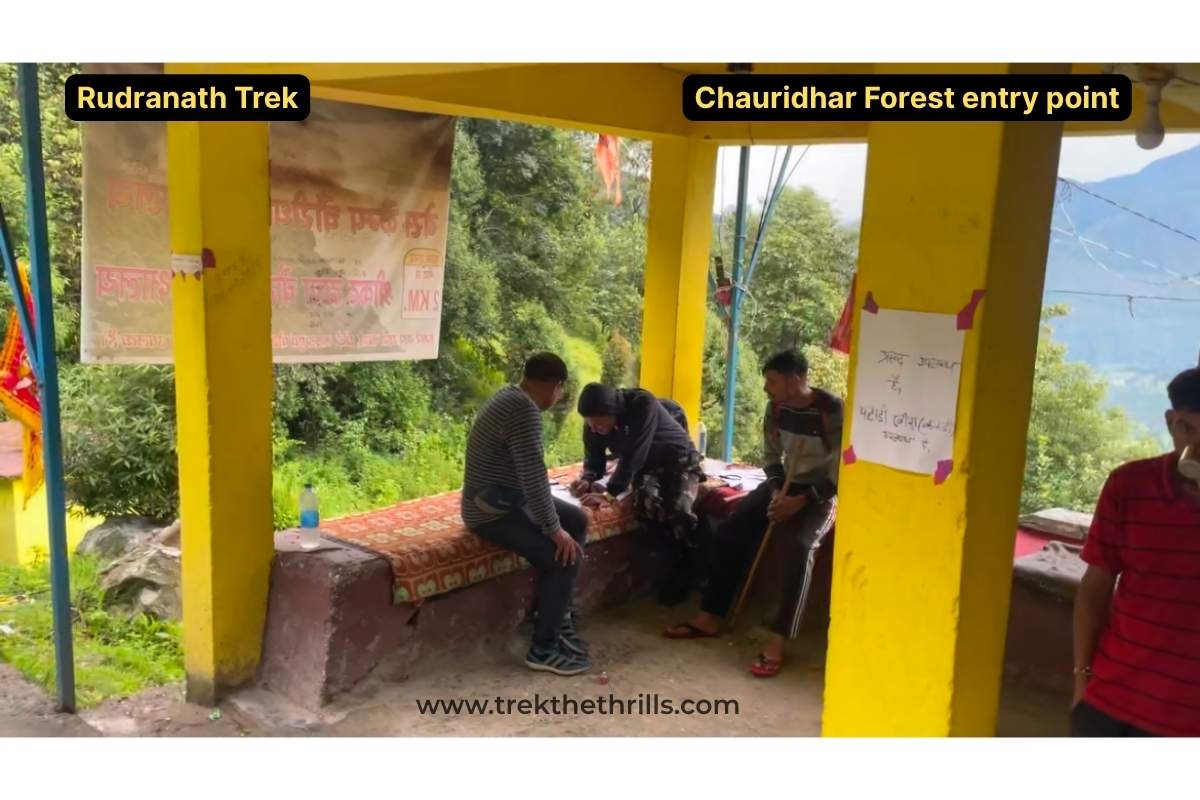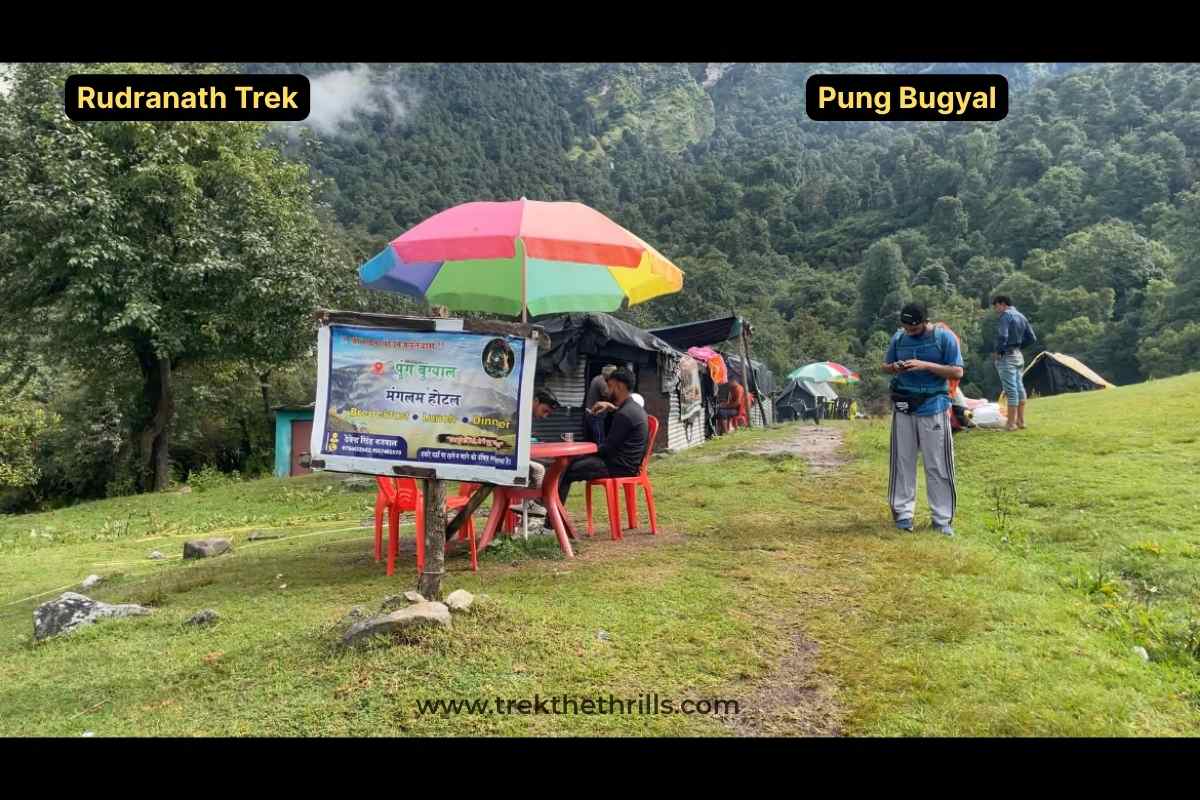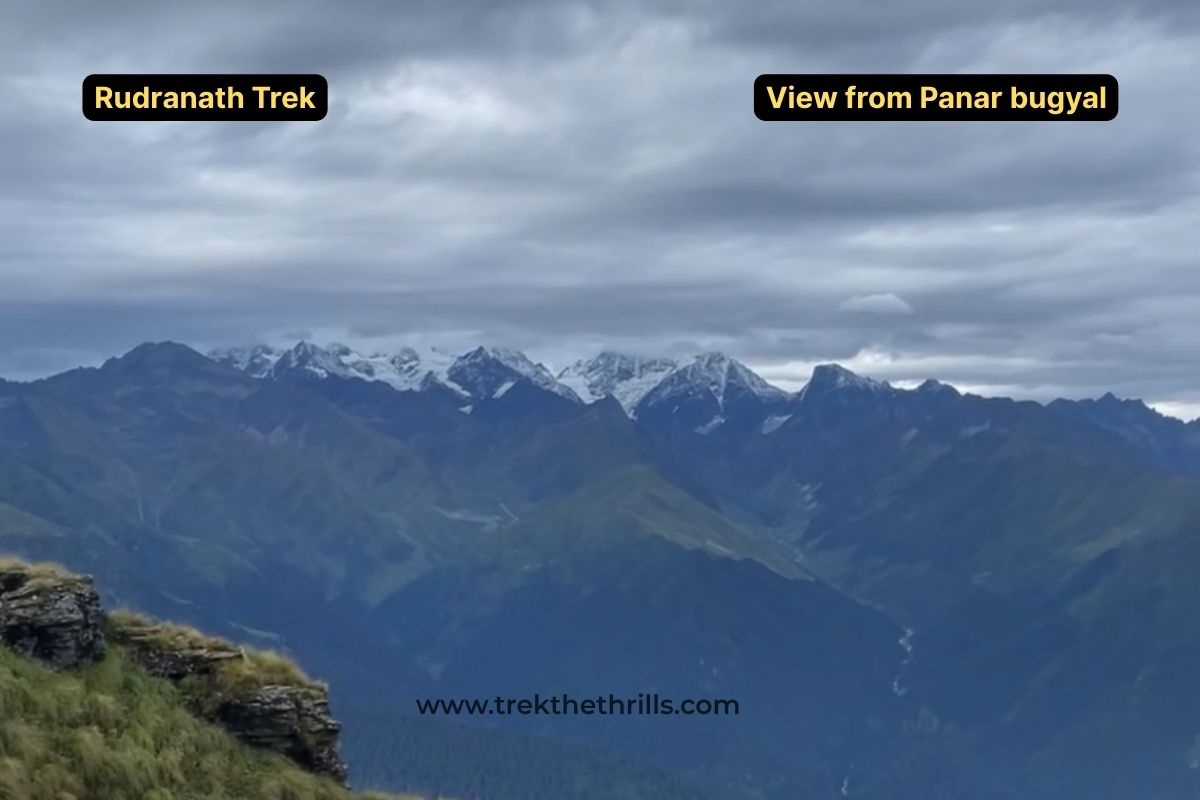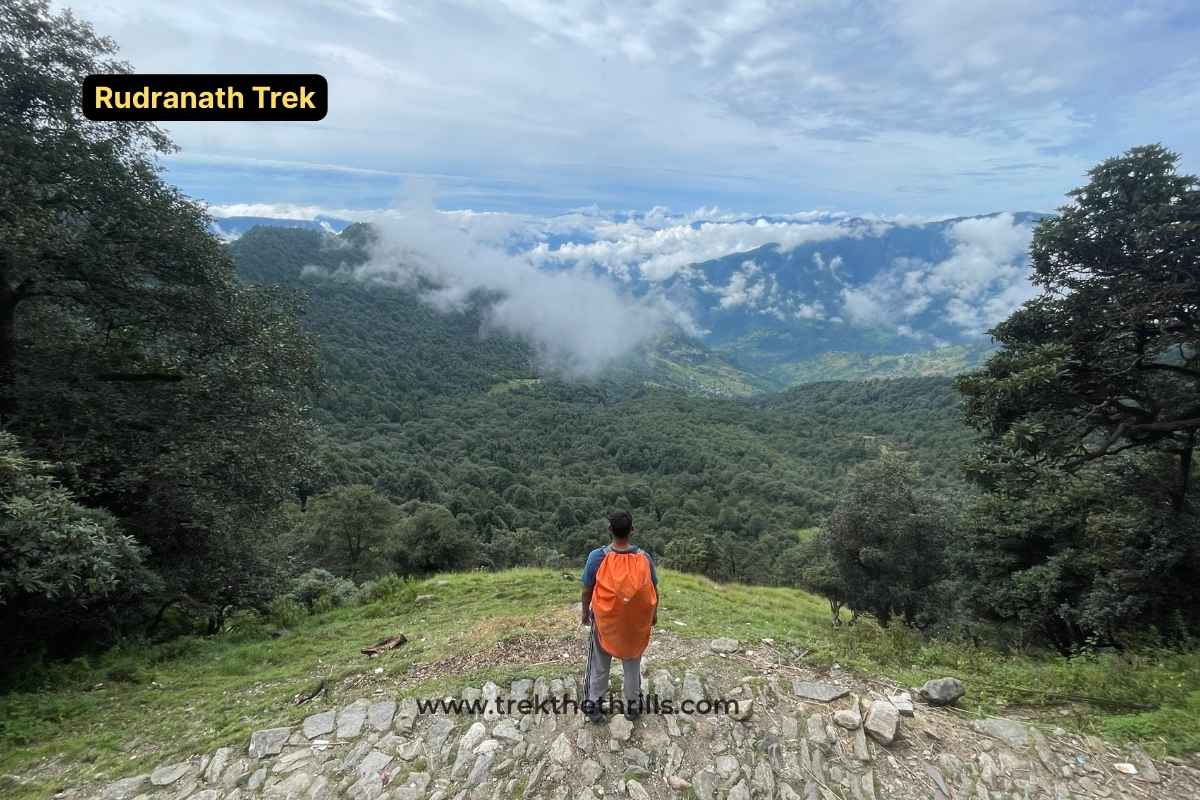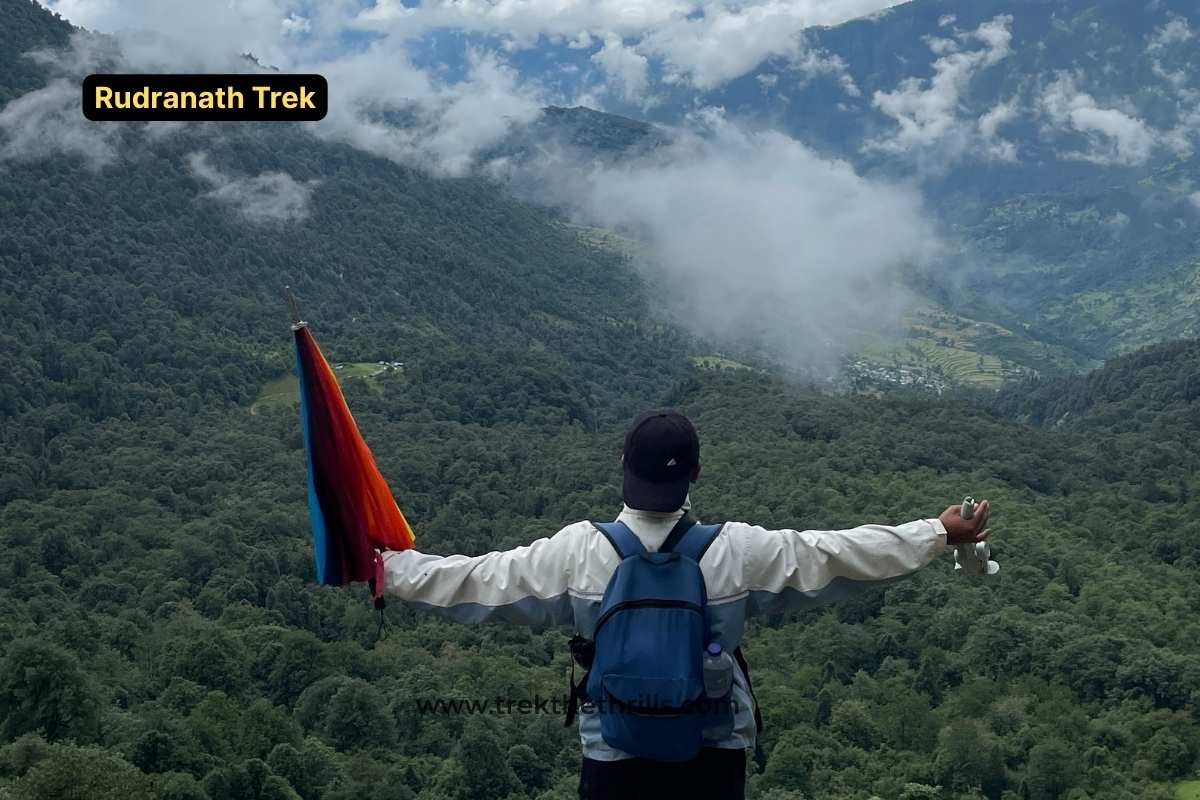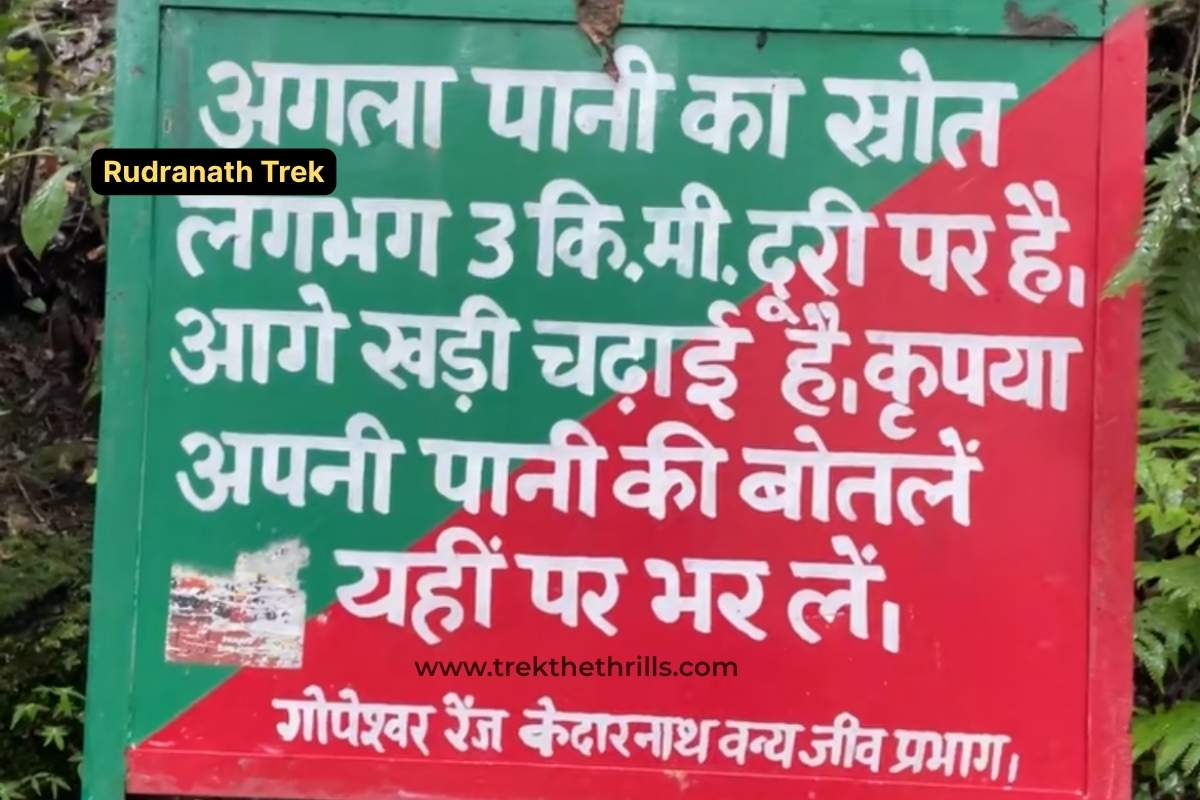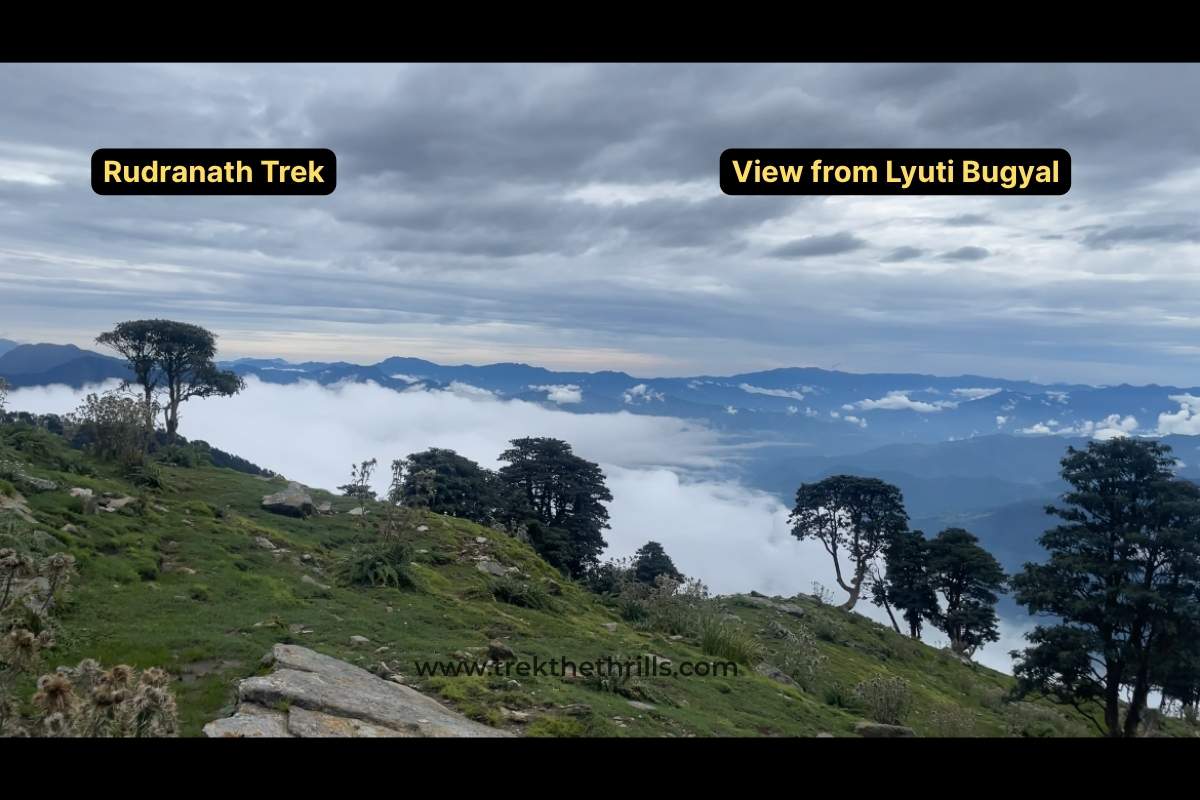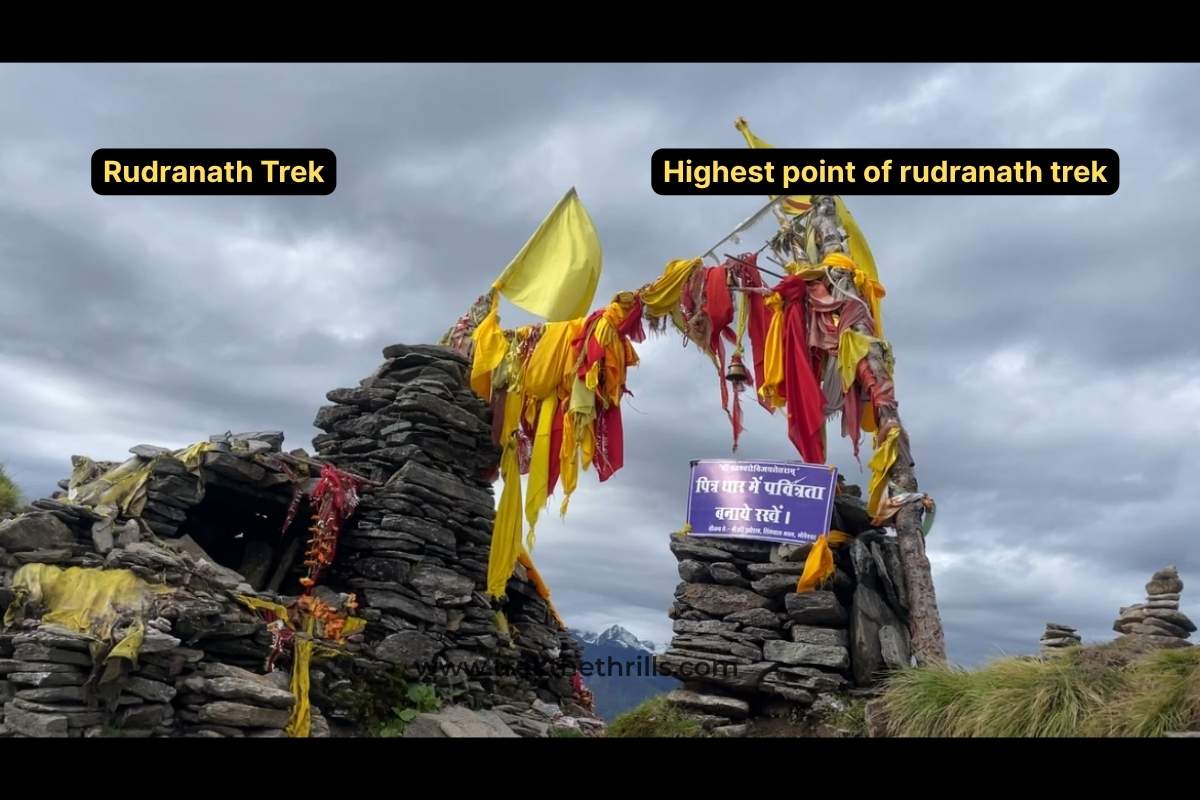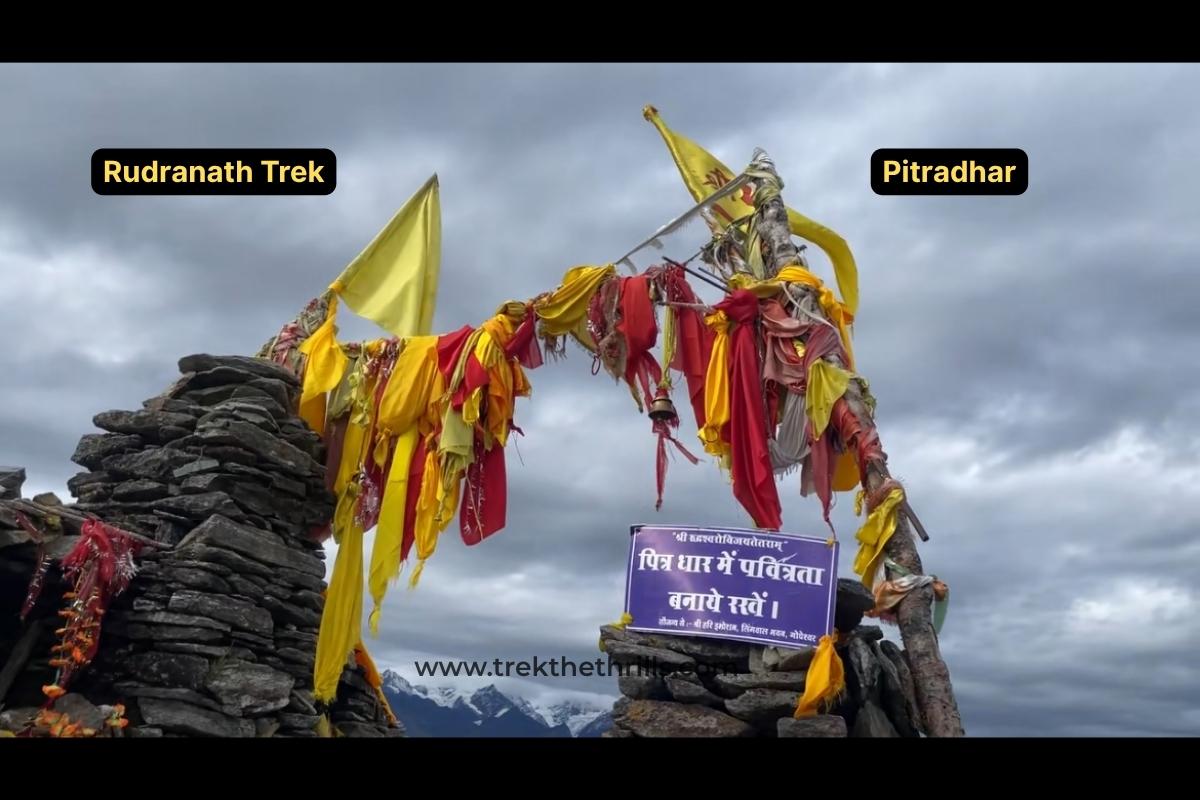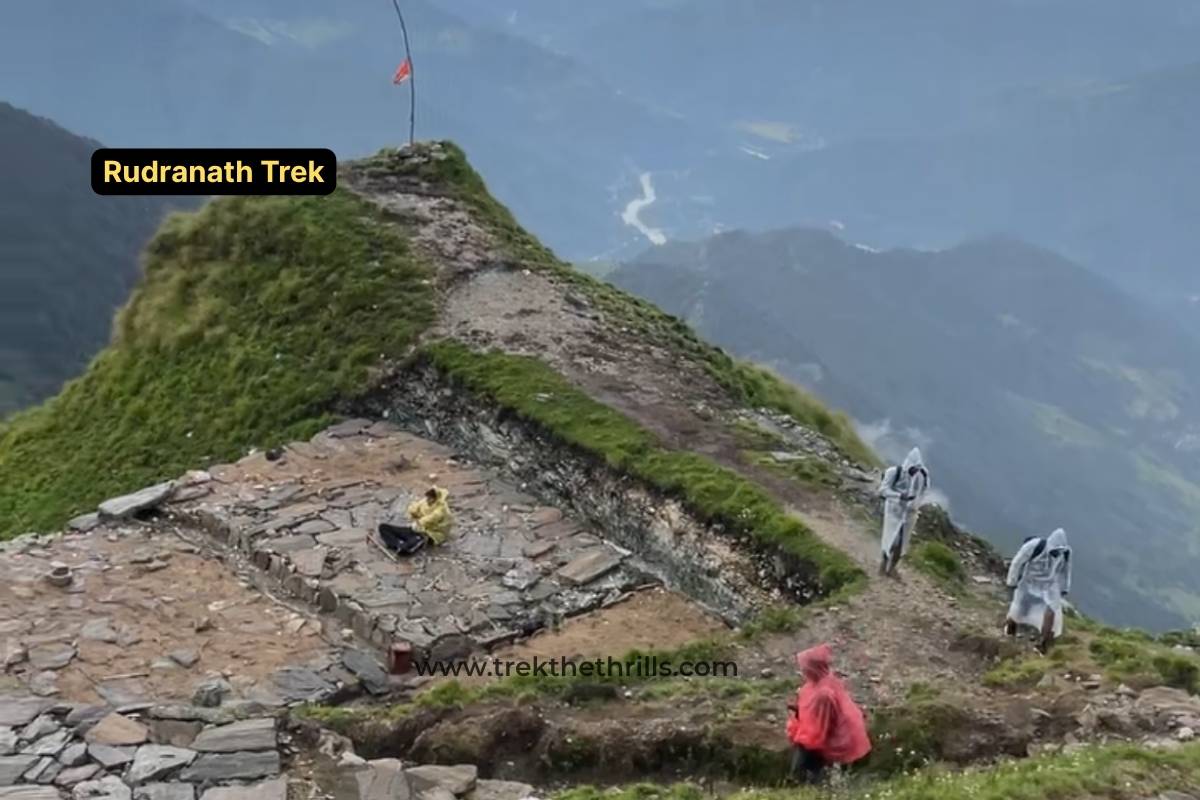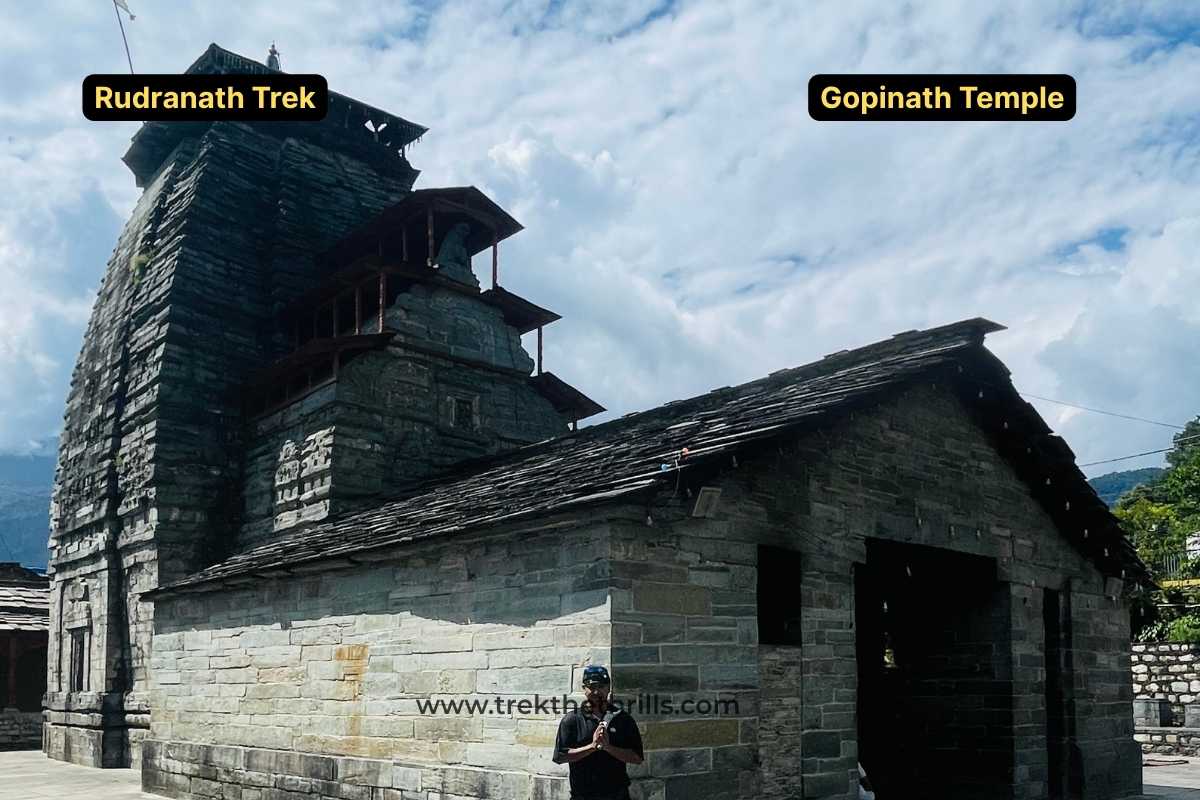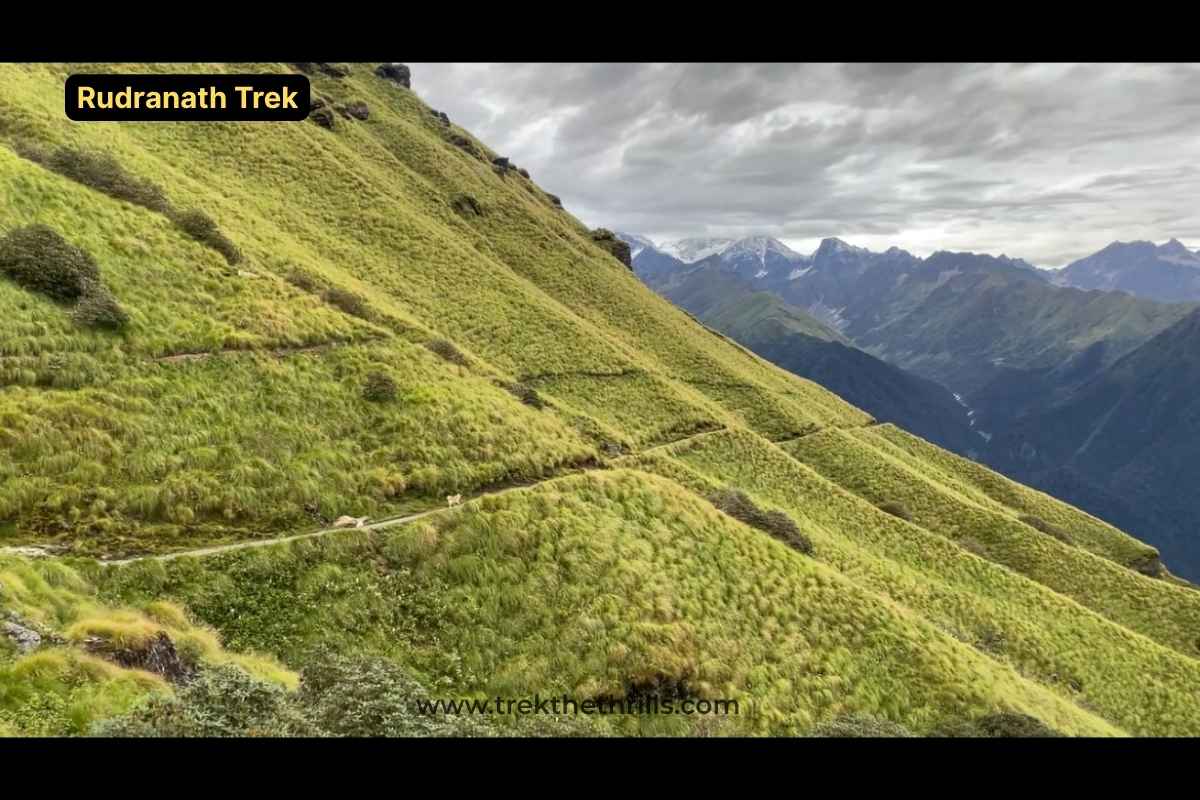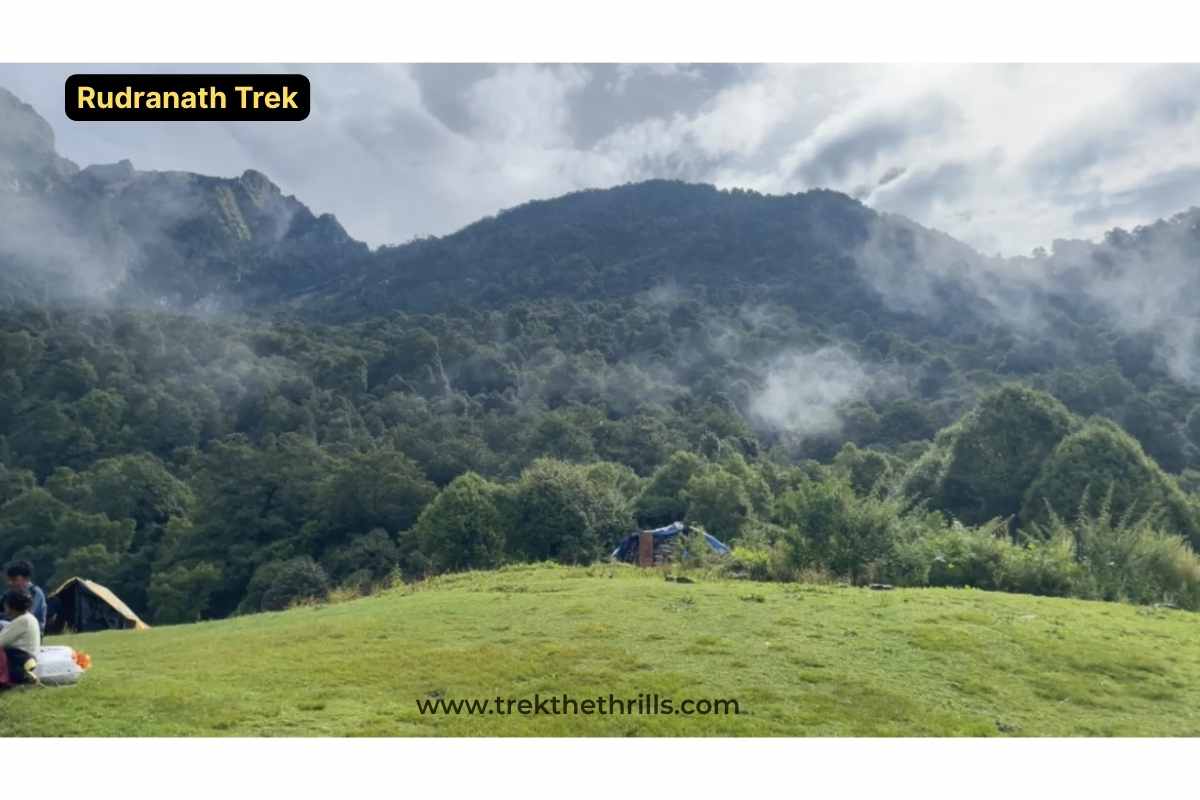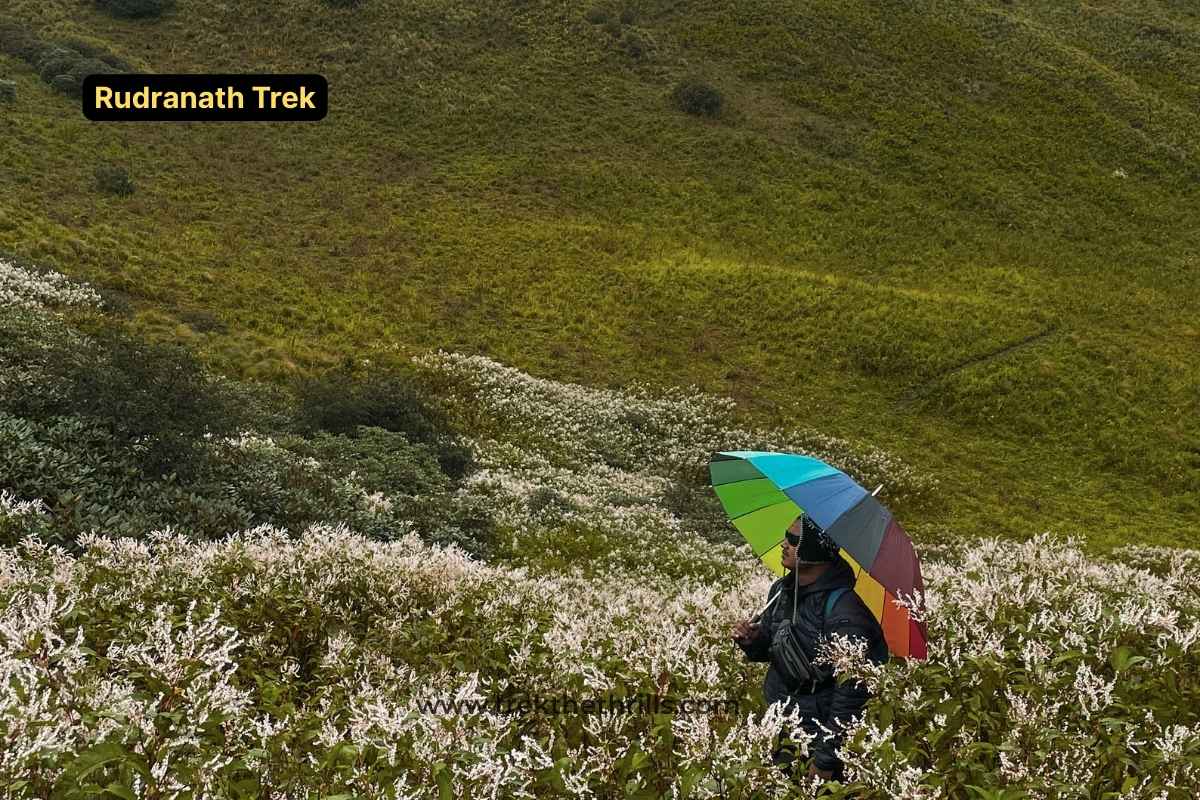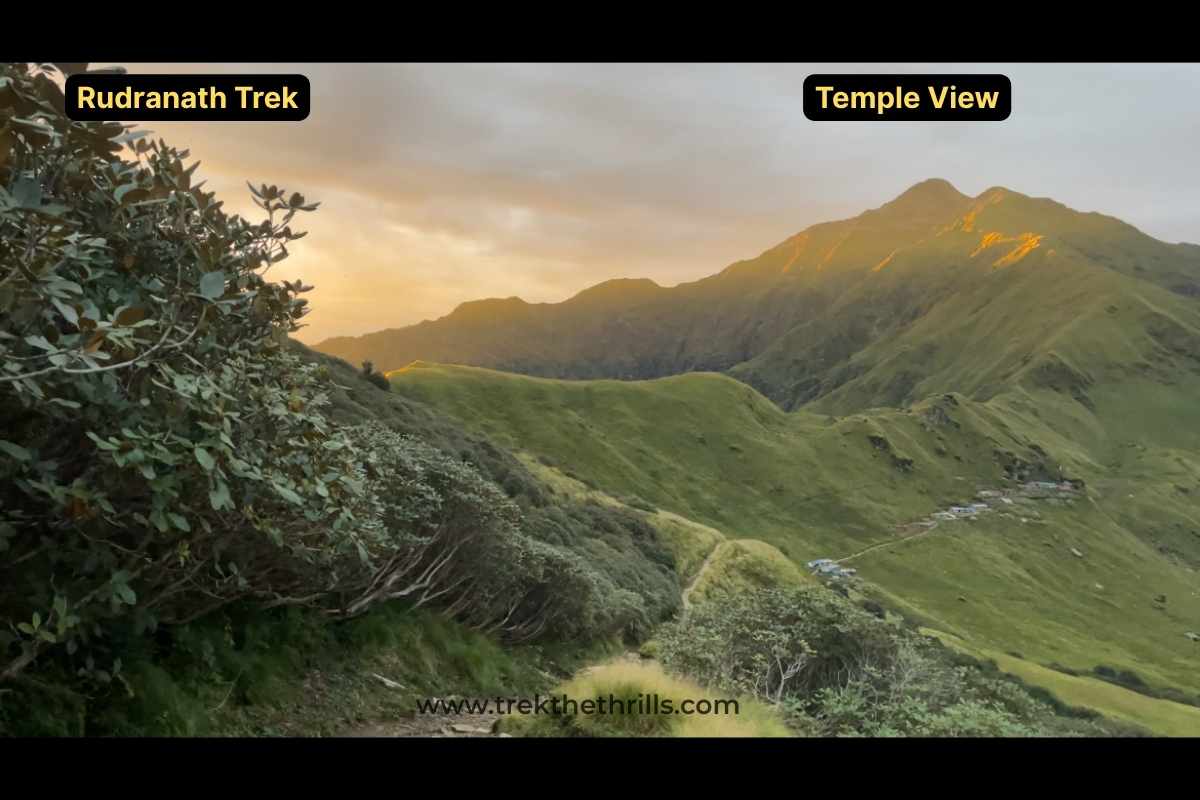Rudranath Temple Trek | The Toughest Kedar of the Panch Kedar Circuit
Rudranath Temple Trek | The Toughest Kedar of the Panch Kedar Circuit
Message us to get your itinerary on WhatsApp!
Rudranath Temple Trek 2025
-
Comfortable Accommodation, seamless Transportation, delicious Meals, and basic Medical Assistance
-
Journey starts and ends at Rishikesh
-
24/7 Customer Support for any assistance
-
Enjoy breathtaking Sightseeing at all major destinations
-
Early Bird Discounts available — Book now and save!
- Uttarakhand
- Duration: 5D/4N
- Base: Sagar Village
- Grade: Easy to Moderate
- Atlitude: 11,800 ft
- Best time: May to Oct
- Distance: 24KM
-
Last ATM:
Gopeshwar, Chamoli
- Uttarakhand
- Duration: 5D/4N
- Base: Sagar Village
- Grade: Easy to Moderate
- Altitude: 11,800 ft
- Best time: May to Oct
- Distance: 24 KM
- Min Age: 12yrs
- Last ATM: Gopeshwar, Chamoli
Call our Rudranath Temple Trek Expert Mr. Anup Singh to know more about the trek
Rudranath Trek Description – The Most Challenging Panch Kedar Journey
The Rudranath Temple Trek is considered the toughest among the Panch Kedar treks and offers a unique combination of adventure, spirituality, and nature. Nestled in the Garhwal Himalayas of Uttarakhand, this trek challenges even seasoned trekkers with its rugged terrain, steep ascents, and remote paths.
Local Culture:
The region is home to small villages where locals follow traditional Garhwali customs. Pilgrims visiting the Rudranath Temple witness vibrant religious rituals, folk songs, and warm hospitality that reflect the spiritual essence of the Himalayas.
Region:
The trek passes through Chamoli district, moving across dense forests, alpine meadows, and high-altitude valleys, offering pristine Himalayan landscapes far from the bustle of modern life.
Why Famous:
Rudranath Temple is one of the five sacred Panch Kedar temples in Uttarakhand, dedicated to Lord Shiva. It is famous not just for its spiritual significance but also for the challenging trek required to reach it. Pilgrims and trekkers alike are drawn here for a unique blend of adventure and devotion.
Unlike other Kedars, Rudranath is located in a remote, high-altitude region, making the journey itself a part of the spiritual experience. The temple is believed to represent the face of Lord Shiva, while other Panch Kedar temples symbolize other parts of the deity. Trekkers often find the peaceful surroundings, scenic alpine meadows, and panoramic Himalayan views equally memorable as the temple itself.
Rudranath is also famous for its traditional Himalayan architecture, sacred ponds nearby, and the serene village culture that provides a glimpse into life in the Garhwal region. The combination of religious importance, natural beauty, and trekking challenge makes it a sought-after destination for both pilgrims and adventure enthusiasts.
All Panch Kedar (Brief Overview)
Kedarnath – Represents Shiva’s hump, the most visited Kedar.
Madmaheshwar – Represents Shiva’s navel or stomach, offering serene surroundings and scenic trails.
Tungnath – Represents Shiva’s arms, situated at one of the highest Shiva temples in the world.
Rudranath – Represents Shiva’s face, known as the toughest trek among the five.
Kalpeshwar – Represents Shiva’s hair or head, accessible year-round and located at lower altitudes.
Why the Toughest:
With steep climbs, rocky trails, and unpredictable weather, Rudranath demands high endurance, physical fitness, and acclimatization. Its remoteness and challenging terrain make it the hardest trek among the five Kedars.
Best Time to Visit:
The trek is most suitable in May–June and September–October, when the weather is stable, skies are clear, and the trails are accessible. Monsoon and winters are generally avoided due to landslides and heavy snow.
Population:
The villages en route, like Sagar, Mandal, and Helang, are sparsely populated, mostly by families dependent on agriculture and seasonal tourism. Trekkers often experience the serenity of Himalayan village life.
Wildlife:
The route passes through forested areas rich in biodiversity. Trekkers may spot Himalayan monals, barking deer, langurs, and occasional leopards, along with various alpine birds and flora.
Route:
Popular approaches include Sagar Village → Panar Bugyal → Rudranath Temple, or Mandal Village → Rudranath. Longer routes connect Kalpeshwar to Rudranath, covering multiple Panch Kedar temples in a single expedition.
Peaks:
Along the trail, trekkers are treated to breathtaking views of Himalayan peaks such as Nanda Ghunti, Trisul, and Chaukhamba, making it a visual delight amid the tough trekking challenges.
History:
Rudranath Temple has a rich historical and mythological background, rooted in ancient Hindu legends. According to mythology, after the Mahabharata war, the Pandavas sought Lord Shiva to atone for their sins. Shiva, displeased by the war, disguised himself as a bull and disappeared into the Garhwal Himalayas.
The Pandavas discovered parts of Shiva’s body at five different locations, which are now the Panch Kedar temples. Rudranath is believed to be the place where Lord Shiva’s face appeared, making it a spiritually significant site.
The temple is centuries old, with records of pilgrims visiting since medieval times. Despite its remote location, the temple has been maintained by local villagers and devotees over generations. The history of Rudranath is intertwined with legends, pilgrimage traditions, and local Himalayan culture, making it not only a religious landmark but also a heritage site that preserves the spiritual and cultural identity of the region.
INCLUSIONS
-
Rishikesh to Rishikesh
-
Accomodation: Hotel/Home Stay/Camps
-
Meals breakfast from first day you when check in to check out breakfast.(4 breakfast & 4Dinner)
-
Permits & Fees: All necessary forest entry passes and trek permits included.
-
Guidance: Professional, certified trek leaders and friendly local support staff to assist you.
-
Medical Support: First-aid kits, oxymeters, and oxygen cylinders available at campsites for emergencies.
-
24/7 Customer Support for any assistance.
-
Hygiene & Safety: Regularly sanitized campsites, safe sleeping arrangements, and clean surroundings maintained.
EXCLUSION
-
5% GST (Goods & Services Tax) is extra
-
Any services/items not specifically listed under “Inclusions”
-
Meals during travel to/from the base location
-
Personal expenses like tips, phone calls, or extra snacks
-
Additional accommodation or stay caused by roadblocks, landslides, or heavy snowfall
-
Backpack offloading charges and personal porter/mule costs
-
Emergency evacuation expenses (if required)
Rudranath Temple Trek- Itinerary (6D/5N)
Rudranath Temple Trek- Itinerary (5D/4N)
Day 1: Rishikesh to Sagar Village
- Distance: 220 KM
- Travel Time: 08 hours
- Pickup Point: Natraj Chowk & 60's Cafe, Rishikesh
- Altitude Gain: 2300 m
Start early from Rishikesh and drive through beautiful Himalayan valleys, rivers, and small villages to reach Sagar Village, the base for the trek. Along the way, enjoy the scenic landscapes and the changing terrain as you ascend into the mountains. Upon arrival, relax and take some time to explore the village, interact with locals, and see the traditional Garhwali way of life. Prepare your trekking gear for the journey ahead and spend the night in a guesthouse or camp at Sagar Village.
Day 2: Sagar Village to Luiti Bugyal
- Trek Distance: 12 km
- Trek Time: 8 hours
- Total Altitude: 3000 m
- Difficulty: Easy to Moderate
Day 3: Luiti Bugyal to Rudranath Temple via Pitrdhar
- Trek Distance: 12 km
- Trek Time: 8 hours
- Total Altitude:3600 m
- Difficulty: Easy to Moderate
Day 4: Rudranath Temple to Sagar Village
- Trek Distance: 24 km
- Trek Time: 10- 12 hours
- Total Altitude:2300 m
- Difficulty: Easy to Moderate
Day 5: Sagar Village to Rishikesh
- Trek Distance: 220 km
- Trek Time: 8 hours
After breakfast, depart from Sagar Village and drive back to Rishikesh, descending through valleys, rivers, and small villages along the way. Enjoy the last glimpses of the majestic Himalayas and the changing landscapes during the drive. Arrive in Rishikesh by afternoon, concluding your Rudranath Trek, taking with you memories of adventure, spirituality, and natural beauty.
Rudranath Temple Trek 2025 - Guided Map
Click Here
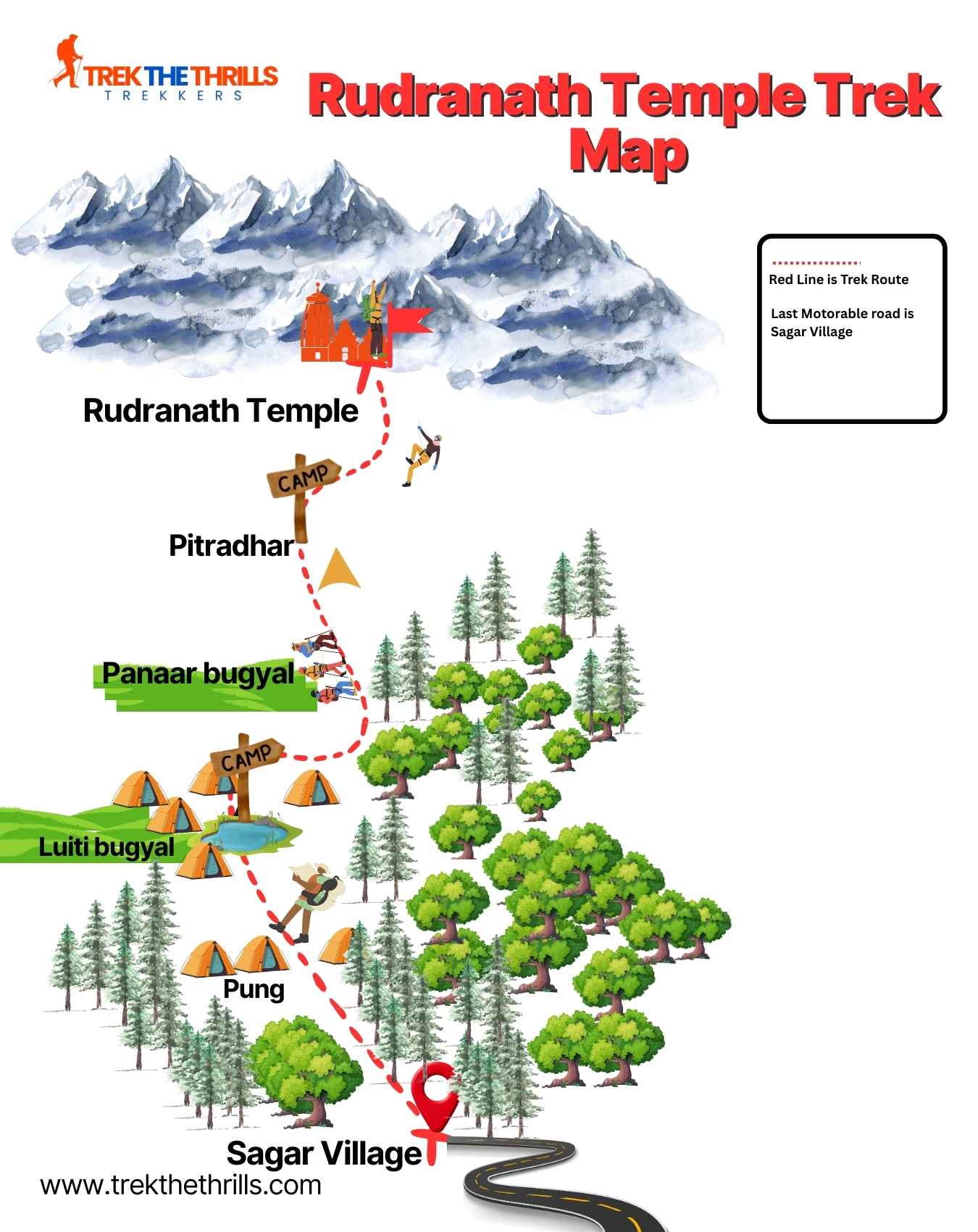
Rudranath Temple Trek 2025 Essentials
- 🎒Gear & Equipment
- A sturdy rucksack (60–70 L with rain cover)
- Trekking shoes with good
grip (men’s/women’s) - Trekking pole (highly recommended)
- Headlamp/torch with spare batteries
- Poncho or rain jacket
- 🧥 Clothing
- 1 down jacket (for extreme cold)
- 1 fleece or light woollen jacket
- 2 trekking pants (quick dry preferred)
- Thermal wear (top & bottom)
- Warm socks (2–3 pairs) + cotton socks
- Woollen cap & sun cap
- Waterproof/woollen gloves
- Extra warm layers for nights
- Comfortable lowers for camping
- 🍽️ Utensils & Documents
- Lunch box, plate & spoon
- Coffee mug/water bottle (or hydration bladder)
- Government-issued photo ID proof
- 🧴 Personal Care
- Sunglasses (UV protected)
- Sunscreen (SPF 30+) & lip balm
- Moisturiser
- Hand towel
- Toilet paper & wet wipes (unscented)
- Pocket-sized soap/handwash
- Sanitizing toilet spray
- Ziplock bags (for waste segregation)
- Toothbrush & toothpaste
- 🩹 Health & Utilities
- Basic first-aid kit (with prescribed medicines)
- Energy bars & dry snacks
- Power bank
- Sandals/floaters (for campsites)
- Balaclava or scarf for wind protection
How to Reach Base ( Sagar Village)
- AIR
- TRAIN
- ROAD
Sagar Village is well-connected by road and can be reached from Rishikesh, Haridwar, or Dehradun. From Rishikesh, the route passes through Devprayag, Srinagar, Rudraprayag, and Chamoli, covering roughly 217 km. From Haridwar, it is slightly longer at about 230 km, following a similar route through Rishikesh and the Himalayan valleys. Travelers can use private taxis or buses for the journey.
The Uttarakhand Transport Corporation (UTC) operates buses connecting major cities and towns in Uttarakhand to Chamoli district, providing a budget-friendly and reliable option for reaching the trek base. You can check their schedules and routes on the UTC Official Website.
Once in Sagar Village, local taxis, shared jeeps, or even walking options are available to reach nearby trailheads. The village serves as the gateway to the Rudranath Trek, offering basic accommodations, local guidance, and a glimpse into the Garhwali village lifestyle, making it an ideal starting point for your Himalayan adventure.
FAQ's of Rudranath Temple Trek
Q1. How do I reach the base of the trek?
Q2.What is the best time to undertake the Rudranath Trek?
The ideal months are from June to September, avoiding the monsoon season. During these months, the weather is more stable, and the trails are safer for trekking.
Q3.What is the difficulty level of the trek?
Q4. Is a guide necessary for the trek?
While it’s possible to trek independently, hiring a local guide is advisable for safety, navigation, and cultural insights. Guides are available in Sagar Village and can enhance the trekking experience.
Q5.Are permits required for the trek?
Q6. What is the altitude of Rudranath Temple?
Q7.What are the accommodation options during the trek?
Q8. Is there mobile network coverage during the trek?
Q9. What should I pack for the trek?
Essential items include:
Warm clothing (layers, thermal wear)
Rain gear (poncho or waterproof jacket)
Trekking boots
Sleeping bag and mat
Personal toiletries
First aid kit
Water bottles
Snacks and energy bars
Torch/flashlight
Sunglasses and sunscreen
Identification documents
Q9. What should I pack for the trek?
Essential items include:
Warm clothing (layers, thermal wear)
Rain gear (poncho or waterproof jacket)
Trekking boots
Sleeping bag and mat
Personal toiletries
First aid kit
Water bottles
Snacks and energy bars
Torch/flashlight
Sunglasses and sunscreen
Identification documents
Q10.Are there any safety concerns during the trek?
Safety is paramount. It’s crucial to start the trek early, adhere to the designated routes, and avoid trekking after 2:00 PMwhen the entry gates close. Carrying a first aid kit and being aware of altitude sickness symptoms is recommended.
Q11.Can I combine the Rudranath Trek with other Panch Kedar treks?
Yes, many trekkers combine the Rudranath Trek with other Panch Kedar treks, such as Madmaheshwar and Kalpeshwar, to complete the entire circuit. However, this requires additional time, planning, and physical endurance.
Q12.Is camping allowed in Rudranath Trek?
No, forest rules prohibit independent camping on the Rudranath Trek. Trekkers cannot set up their own tents. Only designated local campsites managed by villagers or local operators are allowed for stay. This ensures safety, preserves the fragile environment, and supports the local community.
Why Trek with Trek The Thrills?
Local Expert Guides
Trek with experienced and certified Himalayan leaders who ensure safety and share deep insights about the mountains, culture, and traditions.
Quality Trekking Gear
We provide high-quality tents, sleeping bags, and equipment to make sure your adventure is safe, reliable, and comfortable.
Safety & Medical Support
Your safety is our top priority. Our team carries first-aid kits, oxygen support, and is trained to handle emergencies at high altitudes.
Affordable Transparent Packages
As the best trekking agency in Uttarakhand, we believe in fair pricing with no hidden costs—so you can focus only on the experience.
Small Group Experience
We keep our batches small to give you personalized attention, better safety, and a richer Himalayan experience.
24/7 Support & Assured Departures
Enjoy hassle-free booking and guaranteed departures. Our support team is always available before, during, and after your trek.


